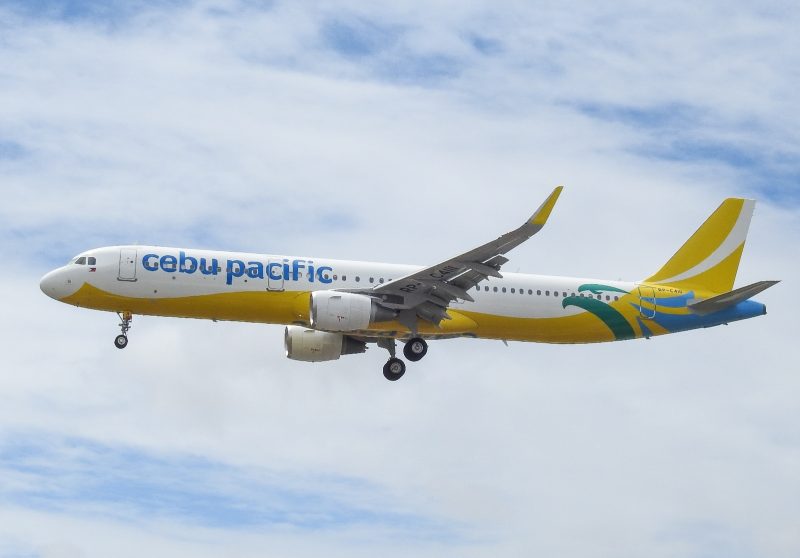Some Cebu Pacific aircraft appear to have gotten particularly hot or cold in the last few weeks. More and more passengers are complaining on social media that the air conditioning systems on board some aircraft are either not working at all or are working incorrectly.
Travelers are particularly critical of the fact that it was said to have been extremely hot at times, but no cooling was said to have been in operation from boarding to disembarking. In addition, despite the sweltering heat, the cabin crew is said to have never once offered free water.
Various videos are circulating on social media showing passengers who are obviously suffering from the unfavorable climatic conditions. For example, the security cards are used as makeshift compartments. It is interesting to read the comments under the postings, because they claim that it was allegedly just before a medical emergency. Whether this is true cannot be verified.
Instead of hot, there was also bitter cold
But in addition to acute heat, Cebu Pacific also has the exact opposite in store. A malfunction in the air conditioning on one flight meant that it not only felt freezing cold, but the cabin was downright "evaporated". It was expressly not smoke, but cold water vapor that can escape from air conditioning systems when the function is high. Irrespective of this: the result was that it was subjectively felt to be freezing cold during this flight. In social media, passengers claim that this should not have been an isolated case, but should have occurred repeatedly.
When asked, the Cebu Pacific airline made no secret of the fact that it currently had technical problems with the air conditioning systems of individual aircraft. A “culprit” has already been found for this, namely the US company Pratt & Whitney. This is accused of operating interruptions in the air conditioning systems due to delivery delays. The operating times have to be adjusted, because Cebu Pacific has repeatedly had to thin out the flight schedules due to the unavailability of replacement engines.
Air conditioning and engines: Bleed air can be a problem
What do the drives actually have in common with the air conditioning systems? Most aircraft types use engine bleed. This is the term for compressed air bled from an airplane's engines. This air is used for various purposes on board, such as air conditioning the cabin, operating pneumatic systems or starting the engines. The bleed air is usually taken from the compressor stage of the engine and routed through special lines to the appropriate systems in the aircraft. It is important to note that the bleed air is cleaned and cooled prior to use to ensure it meets the needs of the various systems.
Some modern aircraft models do not use bleed air for the air conditioning, but instead rely on so-called "bleedless" systems. These systems use electrically powered compressors to provide the required cabin air conditioning. An example of an aircraft using such a system is the Airbus A350. On this aircraft, the air conditioning is operated purely electrically, which leads to more efficient use of energy and reduces the need for bleed air. However, it is important to note that not all aircraft models have such bleedless systems and continue to use bleed air for air conditioning. Some aircraft types that do not use bleed air for air conditioning are:
Airbus A350: The Airbus A350 uses a "bleedless" system in which the air conditioning is operated purely electrically.
Boeing 787 Dreamliner: The Boeing 787 Dreamliner also uses a "bleedless" system that relies on electrically operated compressors.
Embraer E-Jets E2: The latest generation of Embraer E-Jets, the E2 series, also uses a “bleedless” system for cabin air conditioning.
In the past, no bleed air was used for the cabin on the Douglas DC-8, Boeing 707/720 aircraft. In the case of the first model, this was used, for example, to de-ice the wings.
Cebu Pacific quoted for report
Completely independent of the "technical cause", the government of the Philippines has already reacted to the veritable shitstorm that can be found in social media. Due to massive complaints, which were also brought to state authorities, the management of Cebu Pacific has to appear before the Senate for a hearing.
It is still unclear whether the carrier could face consequences or requirements from the civil aviation authority. At least it cannot be ruled out that aircraft with defective air conditioning may no longer be used for passenger flights.







 trail (for them it's free to use)
trail (for them it's free to use)